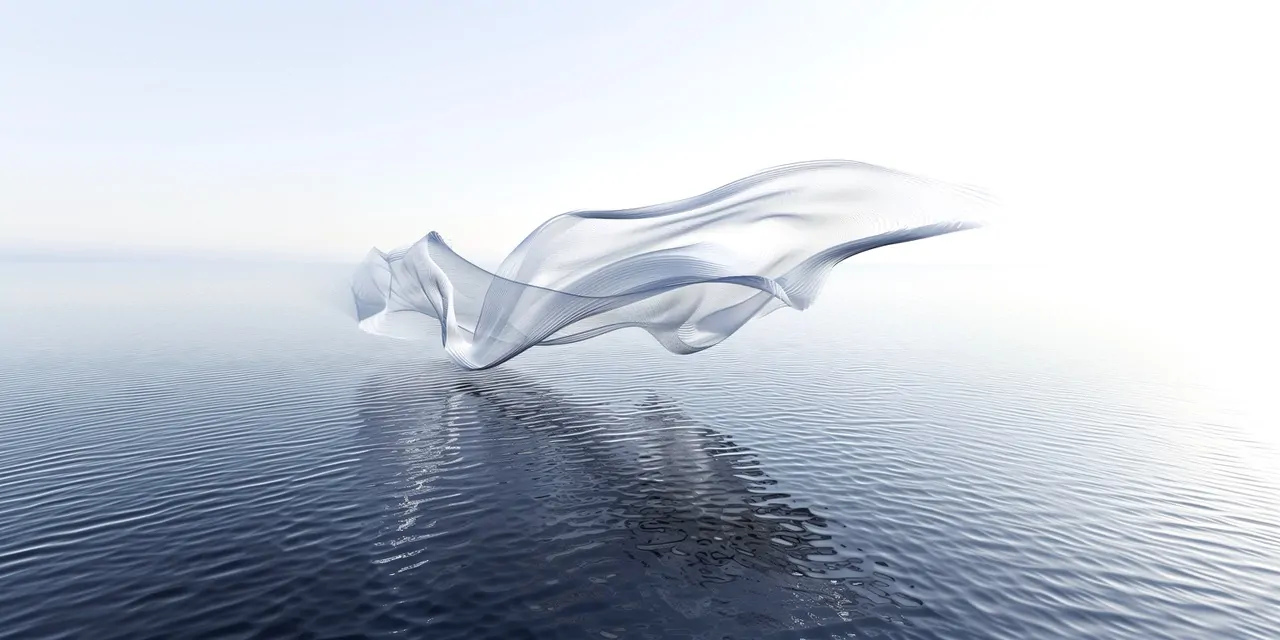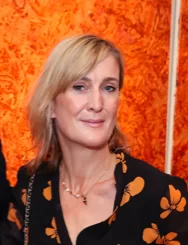Amelia Peng works at the intersection of creativity, sustainability, and technical precision, pioneering next-generation materials that shape the future of design and product innovation. With expertise spanning brand projects, textile design, R&D, advanced concepts, and sustainable strategies, she has collaborated with leading companies including Ralph Lauren, Burberry, Hermès, adidas, Nike, and lululemon. Integrating scientific research, trend forecasting, and creative vision, Amelia partners with start-ups, academia, and industry leaders to translate advanced material technologies into practical innovations.
Her approach balances performance, aesthetics, and environmental responsibility, enabling organisations to push boundaries, elevate material expertise, and deliver scalable solutions aligned with creative and sustainability goals.
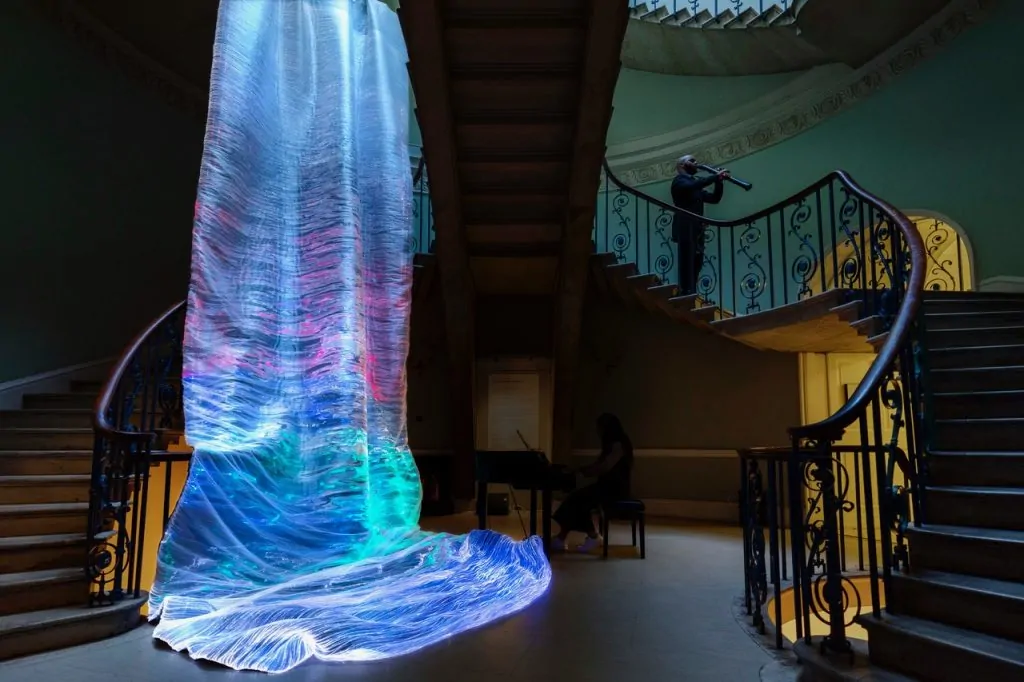
In her artistic practice, Peng extends this ethos to the realm of immersive, multi-sensory experiences. Inner Peace, presented at the London Design Biennale 2023, exemplifies her ability to fuse technical innovation with poetic vision. Installed within the reconstructed Nelson Staircase at Somerset House—a historically charged architectural symbol of resilience—Inner Peace reimagines the waterfall as a ritual of purification and meditation, inviting audiences to explore empathy, mindfulness, and collective presence. Peng recently staged an interpretation of Inner Peace at the Saatchi Gallery in ArtEvol2025 (12–19 September).
The Nelson Staircase, originally built in the 18th century by Sir William Chambers and reconstructed after the Second World War, provides a monumental frame for Peng’s installation. The architectural setting, with its sweeping spiral and historical gravitas, resonates with the work’s core themes: endurance, attunement, and the fragile beauty of human connection. Within this space, Peng orchestrates a rare synthesis of disciplines, collaborating with composers from the Royal College of Music, the Specialist Modelling Group at Foster + Partners, and Italian textile weaver Dreamlux, to produce an immersive experience that blurs the boundaries between art, technology, and human emotion.
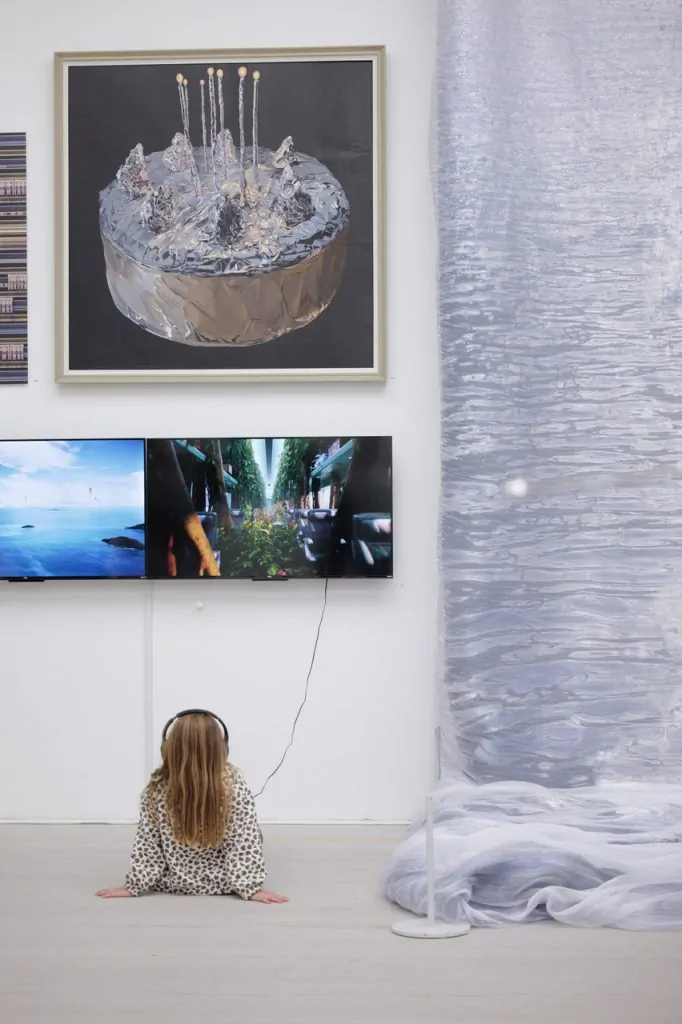
At the heart of Inner Peace is Peng’s Music–Mind–Textile concept: a responsive environment where luminous textiles, live music, and neural feedback converge, and the audience’s emotions ripple through light and sound. Here, textiles transcend materiality to become a living membrane, mediating and amplifying human connection.
Visitors wear EEG headsets that monitor brain activity, translating levels of focus and relaxation into chromatic shifts across fibre-optic textiles. Green and blue hues indicate relaxation, amber and red signify heightened focus, and together they create a dynamic, flowing canvas that reflects the collective interior landscape of all participants. Musicians performing within the installation are also wired to the system, allowing their emotional states to resonate alongside the audience, creating a living, participatory ecosystem of sight, sound, and feeling.
The installation’s technical execution is a testament to Peng’s precision and material innovation. Two layers of woven fabric—translucent organza at the front and jacquard at the back—incorporate nearly 76 kilometres of fibre optics and over 190 LEDs, creating seamless visual undulations that evoke the movement of water. The lighting choreography, developed by the Specialist Modelling Group at Foster + Partners, ensures that neural and musical inputs are harmoniously integrated. Dreamlux’s weaving techniques allow for continuous, ripple-like shifts of light, producing the waterfall effect that is both mesmerising and meditative.
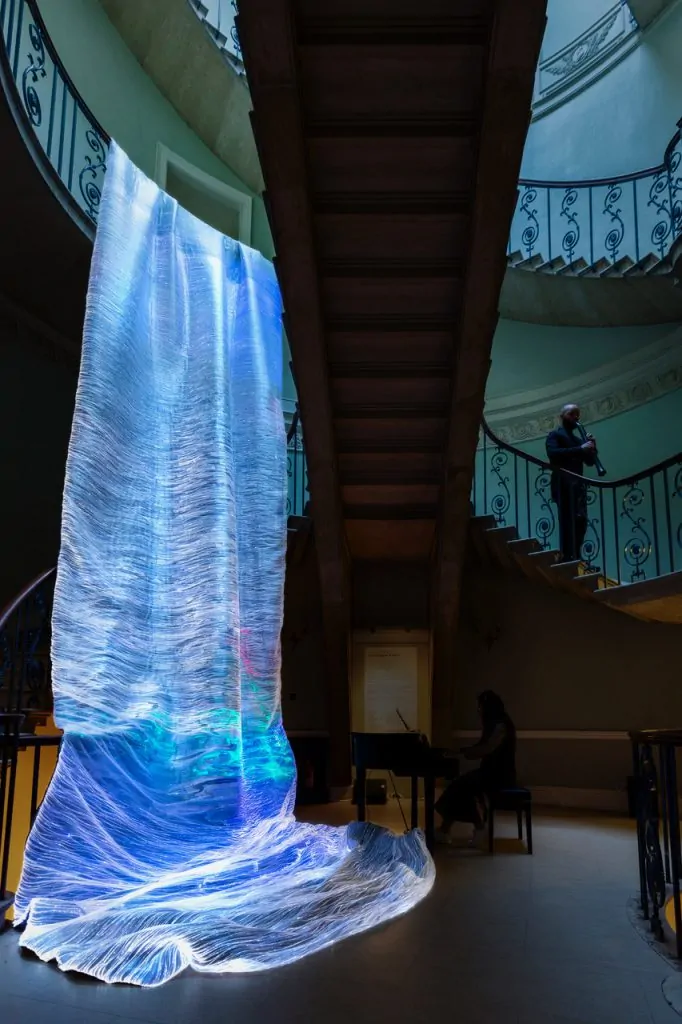
Beyond its technical virtuosity, Inner Peace is an embodied inquiry into empathy. The installation transforms abstract concepts of human emotion into visible, shared experience, making peace not a static ideal but a living, breathing process enacted through presence, attention, and connection. In Peng’s hands, textiles cease to be passive materials; they become living membranes, mediating the invisible rhythms of the mind and heart. Music is not merely aesthetic, but interactive, creating a dialogue between performer, audience, and environment. Visitors engage directly with the work, their physiological responses shaping the installation in real time—a testament to the power of art to facilitate human attunement.
The conceptual depth of Inner Peace draws inspiration from both scientific inquiry and global social consciousness. Peng cites theoretical physicist Michio Kaku’s The Future of the Mind (2014) as a guiding framework for exploring consciousness and emotion. Simultaneously, the installation aligns with the United Nations’ Sustainable Development Goals (SDGs) 2030, emphasising inclusivity, mindfulness, and social awareness. By inviting participation from over ten nationalities and merging expertise across music, architecture, textile science, and neuroscience, the project demonstrates the transformative potential of interdisciplinary collaboration in shaping socially and environmentally conscious art.
Experientially, Inner Peace is profoundly affecting. As visitors approach the stairwell, soft, undulating lights hint at the work’s immersive potential. Ascending or descending the stairwell, they encounter a cascade of colour and light that flows like water, responding to their emotional states and the music permeating the space. The effect is both calming and revelatory, offering a moment of introspection while underscoring the collective dimension of human empathy. In this way, the installation reframes survival and resilience—not as solitary endeavours but as acts of shared attunement, where history, memory, and emotional presence converge.
Inner Peace also demonstrates the poetic potential of advanced material innovation. Peng’s use of fibre-optic textiles, EEG-responsive programming, and live performance exemplifies how technical mastery can serve expressive and emotional purposes. Each component—material, light, sound, and neural data—is carefully orchestrated to create a holistic, multi-sensory narrative that is intellectually rigorous and emotionally resonant. The work embodies Peng’s commitment to balancing creativity, performance, and sustainability, showcasing how art and design can operate as tools for societal reflection and engagement.
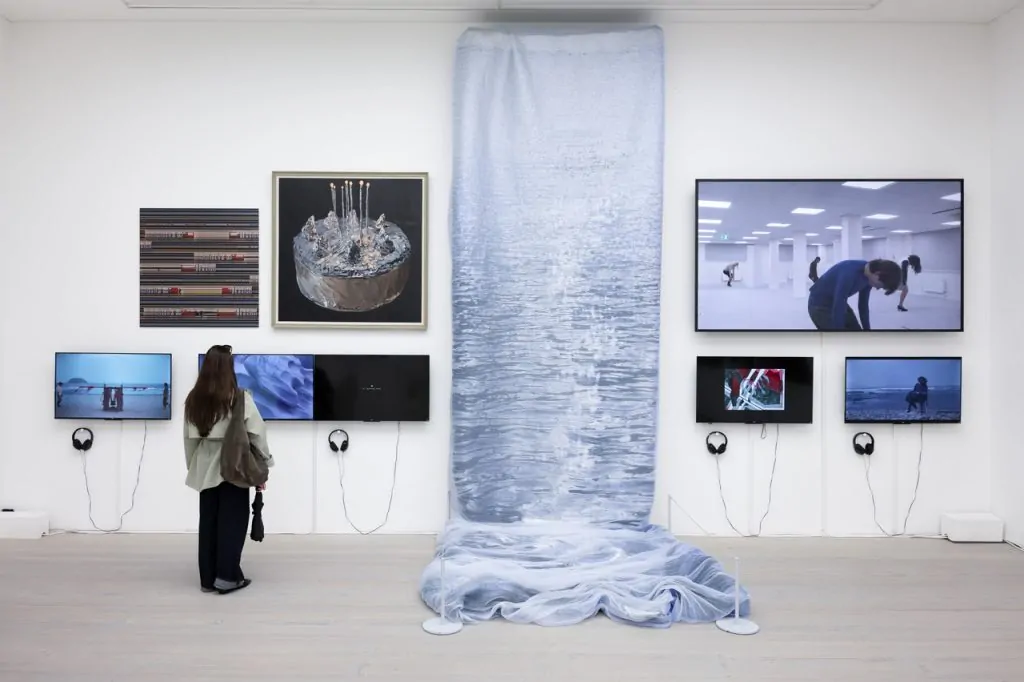
Ultimately, Inner Peace embodies a new paradigm for contemporary art and design. It dismantles disciplinary boundaries, elevates collaboration to an artistic medium, and demonstrates the potential of science, craft, and human experience to coalesce in immersive form. Here, peace is not an abstract ideal but a structurally enacted, lived phenomenon, unfolding in the interplay between mind, body, and material. Amelia Peng’s work stands as a testament to empathy, resilience, and the transformative potential of art, reminding us that innovation is most meaningful when it bridges technology, creativity, and human consciousness.
In a world marked by disconnection and uncertainty, Inner Peace offers a vision of hope and attunement, guiding audiences to rediscover mindfulness, emotional literacy, and the profound beauty of shared experience. Through her pioneering work, Amelia Peng demonstrates that design and material innovation are not merely tools for aesthetic advancement—they are instruments for cultivating empathy, connection, and a more inclusive, sustainable future.
©2025 Amelia Peng


